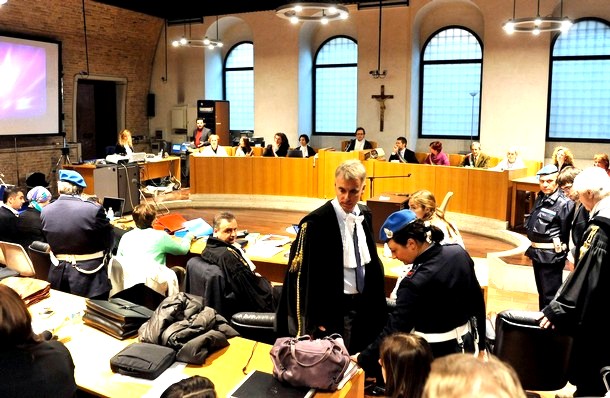
Category: Excellent reporting
Tuesday, December 01, 2009
Barbie Nadeau Cracks The Mystery Of Why Sollecito’s Lawyer Was Arguing For Knox
Posted by Peter Quennell
Click above for the report in the Daily Beast.
Yesterday’s strategy by Ms Bongiorno had been puzzling us behind the scenes. Even the Italian media seemed confused. Some thought she was subtly saying that Knox had framed Sollecito. This analysis sounds authentic.
American murder suspect Amanda Knox was nervous Monday morning when she entered the courtroom in Perugia…
Sollecito’s co-counsel Giulia Bongiorno…. surprised court observers and spent most of the morning ignoring her own client. Instead, she defended Knox even though Sollecito is the only of the two with DNA evidence in the room where Kercher was murdered…
By doing the work of Knox’s defense team, Sollecito’s own defense took a calculated risk that it will be harder for the jury to convict them both. But in doing so, she paved the way for the two to be judged as one, meaning they will either both be acquitted or both receive life sentences.And by defending Knox and attacking the forensic evidence against her…. [Bongiorno] is banking that Knox’s lawyers will also do their bit to defend Sollecito later this week when it is their turn.
“She is not Amanda the Ripper,” Bongiorno told the jury, which at times must have been wondering when she would get to Sollecito. “She is a little crazy, extravagant. She does the cartwheels in the police station because reality for her is too strong to deal with. She is spontaneous, immediate, and imprudent.”
It was a moment of obvious relief for Knox. The last few weeks have been particularly arduous for her. Two weeks ago, Rudy Guede, the man who has already been convicted for his part in Kercher’s murder, testified in his appeals trial that he saw her silhouette in the window of the crime scene the night of the murder.
The same week, the prosecutor painted a disturbing picture of Knox as a drug-fueled vixen who called Meredith Kercher “prissy” before threatening her at knifepoint to have group sex with Guede and Sollecito. Then last week as the civil plaintiff’s closing arguments against her concluded, Knox was called a “dirty minded she-devil” by lawyers for Patrick Lumumba….
[Monday] was the best day the defense has had in this trial. Bongiorno’s oratory was a tribute to criminal defense. The jury didn’t take their eyes off her as she weaved a story separated by her own self-titled chapters. And when Knox’s defense lawyers begin their summation, they are expected to do their part and pick up where Sollecito’s defense left off.
“We are really four lawyers with two clients,” Knox attorney Carlo Dalla Vedova said after court. “We are all in the same boat.” Soon the jury will decide whether it will stay afloat.
Andrea Vogt Asks Some Useful Questions Concerning The Legal Process
Posted by Peter Quennell
Click here to read all of this well-researched report on the Seattle P-I website.
After presenting an overview of the system similar to those posted here by Nicki and Commisario Montalbano Andrea Vogt asks two experts on the system these questions.
Do jurors have to find Knox guilty beyond a reasonable doubt?
Yes. The concept of proof beyond a reasonable doubt has long been a part of Italy’s justice system. It was formalized and passed into law in 2006.
Knox’s defense lawyer Luciano Ghirga said his team will remind jurors that, even after more than 40 hearings, everything is still in doubt.
The court’s ruling (which is not called a verdict in Italy) is made by an eight-member jury: six laymen and two professional judges. They will vote, and the majority rules. In the case of a 4-4 tie, acquittal overrules.
Could Amanda Knox have plea bargained?
Knox maintains her innocence.
However, while not completely analogous to plea bargaining, Italy does have a similar alternative to trial, also a part of the 1988 reforms. The alternative is not applicable for serious crimes, such as murder, punishable by more than five years in prison.
Suspects who cooperate fully with the police, however, may become eligible for a bundle of mitigating circumstances that would lower prison sentences. A judge may also choose to apply aggravating circumstances to increase a sentence.
Negotiation on the evidence—in which both sides agree what can be admitted—is also available when defendants choose a fast-track trial, as did Rudy Guede, sentenced to 30 years last year for his role in the case for which Knox is on trial. Guede is appealing his conviction.
Why does the figure of prosecutor seem so powerful in Italy?
The prosecutor is a powerful figure in Italy connected to the judiciary, not elected or appointed. While there is a career separation between judges and prosecutors, the qualifying examination and training are common, That has made judges and prosecutors close both culturally and professionally.
In the U.S., prosecutors are appointed in federal system and typically elected in the state system, hence it is common to hear cases referred to as The State vs. X.
In Italy, protections were put in place precisely to prevent the state from pursuing or persecuting, hence the independence of prosecutors.
As a result, prosecutors haven’t shied away from taking on politicians. Italian Premier Silvio Berlusconi, for example, faces a series of criminal procedures in the courts.
That independence , some argue, is precisely the protection needed as a check against government power, and without it, corruption could not be exposed, said Maffei. But others argue that prosecutors wage their own political battles. using their independence to attack political opponents.
Another major difference: the prosecutor supervises the investigation rather than letting police handle it.
Further, he or she also has no discretion over the decision to seek charges. There is a constitutional principle of mandatory prosecution. If there is sufficient evidence to build a case against a defendant, a prosecutor must seek an indictment.
In the U.S. prosecutors can and do drop cases for such reasons as workload or because the defendant has agreed to help with a criminal investigation.
Was it legal for Knox not to have an attorney present when police questioned her?
Yes and No.
Amanda Knox’s interrogation falls into a gray area of the law because she came voluntarily to the police station and was being interviewed in the beginning as someone who could become be a witness, not a suspect.
Then, in the course of questioning by police in November 2007, she blamed Patrick Lumumba for the slaying, and said she was present at the scene of the crime. Lumumba was innocent. Knox has since denied she knows anything about the slaying and says she wasn’t in the flat the night Kercher was killed. Limumba is suing Knox for slander.
The law is very clear: A suspect must not be interrogated without a lawyer.
Once a suspect, an interrogation must be interrupted, the suspect read his or her rights to remain silent and be provided a lawyer. Italian law does not allow waiver of one’s right to counsel. Even if a suspect doesn’t want a lawyer, the authorities are required to appoint one.
If a suspect’s freedom of movement is hindered, the interrogation must be videotaped.
In Knox’s case, a video or audio recording of the entire police interrogation (authorities have denied that any such recordings exist) could identify when police began treating Knox as a suspect and what procedures were followed.
In fact, Italy’s Supreme Court has already said that some of her early statements may not be used against her because they were made without an attorney present.
Monday, November 30, 2009
The Summations: Nick Pisa Sums Up Sollecito Lawyer’s Remarks About Knox DRAFT
Posted by Peter Quennell
Tuesday, November 24, 2009
Italians Have For A Long Time Known How Depraved And Cruel The Final Struggle Was
Posted by Our Main Posters
An Exceptionally Vicious Attack
As you can see in the prosecutors’ scenario posted below, we did not translate and post quite everything.
Meredith’s final 15-minute death-struggle is not there.
Back in January of this year the Micheli Report described in great detail Meredith’s autopsy, the wounds on her body, and the horrific state of her room.
Please click here for more
Saturday, November 21, 2009
The Summations: Barbie Nadeau On Mr Mignini Setting Out The Attack Scenario
Posted by Peter Quennell
Click above for Rome-based Barbie Nadeau’s report from the courtroom. Her excellent description includes this sad passage on Meredith.
Then he described Kercher as a woman full of life and potential, “the young woman we too often forget.” Mignini quoted Kercher’s father John on a number of occasions, especially when explaining that she was a strong woman who practiced karate and who would have fought back against an attack.
The courtroom was silent as he recalled the words of Kercher’s father: “Meredith would have fought with all her life.”
The report also includes this on possible hard drugs.
He also hinted that Knox and Sollecito might have been in a drug-fueled frenzy when they allegedly killed Kercher. He outlined the effects of cocaine and acid, and told the judges and jury how Knox and Sollecito ran with a crowd that often used these “stupificante,” or stupefying drugs.
Drugs were not proven other than that both Knox and Sollecito claimed to have smoked marijuana on the day. The two drugs mainly hypothesized up to now if there was a drug other than unmodified marijuana (cannabis) seem to have been crystal meth and skunk cannabis.
Both of them are now proving a cause of psychotic episodes which can result in fatal attacks. Genetically-engineered skunk cannabis seems to increasingly be most of the cannabis on the market.
Friday, November 20, 2009
The Summations: Nick Pisa In Daily Mail Has A Late-Morning Report
Posted by Peter Quennell
Please click above for Nick Pisa’s full story. Two key claims made by the prosecution:
Murder suspect Amanda Knox was described as ‘dominant’ in her relationship with co-accused Raffaele Sollecito today, as prosecutors began summing up in the case against them.
Prosecutor Giuliano Mignini said Knox ‘dominated’ her relationship with Sollecito who in turn was ‘dependent on her’. He said this was evident in TV footage from the time of the murder, where Sollecito was ‘following on behind her, often kissing and cuddling her.’
Prosecutor Mignini added: ‘The key to this mystery is in the room where the supposed break-in took place’. Mignini added: ‘This break-in is the nail of Knox and Sollecito’s defence, but it was all simulated. ‘It would have been manna from heaven for them if blood or other genetic evidence had been found on the broken glass or window frame but nothing was found.”
“This hypothetical thief then did something quite remarkable - he didn’t take anything of value. No jewellery was missing, computers were left at the scene as well as designer bangs and clothes. A “very strange break-in” was in fact how the first police officer who arrived at the house described it - they could not believe that nothing of value was taken.”
Prosecutor Mignini also pointed out how fragments of glass had been found on top of clothes scattered on the bedroom floor which was also unusual for a break-in, especially if the wardrobe had been ransacked after the window was broken.
He added that it was also virtually impossible to climb to the bedroom window of Filomena Romanelli and that it was also the most exposed as it was visible to the road and passing traffic…
Wednesday, November 18, 2009
Rudy Guede Appeal: Nick Pisa Of Sky News Reports DRAFT
Posted by Peter Quennell
[Microsoft’s Internet Explorer Version 8 is having a widely reported problem showing these online Flash videos; other browsers all seem to work fine]
Monday, November 16, 2009
The Actual State Of Play: The Status Now And What Is Coming Up
Posted by Michael
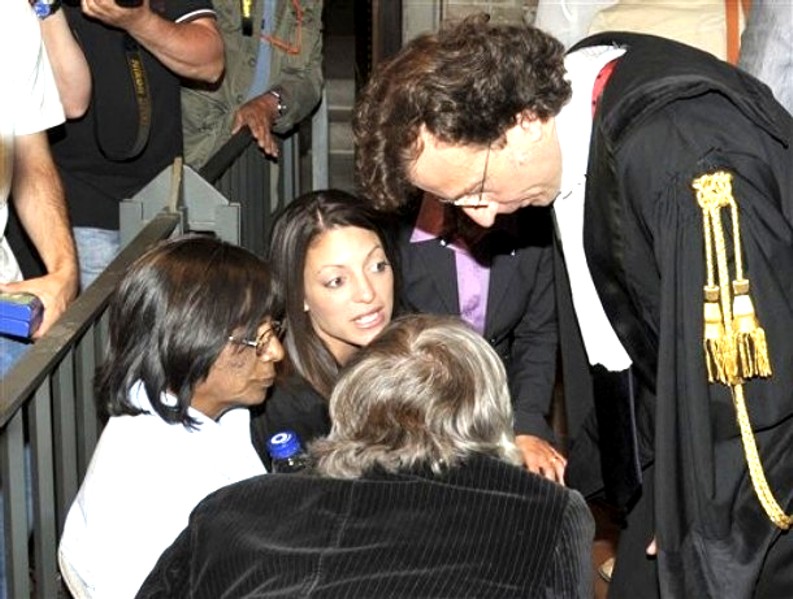
[above: Meredith’s family gets briefed on the proceedings and prospects last June]
The excellent pro-Meredith LA7 documentary that Nicky reported on below would have moved many Italians.
But, apart from some of the claims from Seattle, it is unlikely to have given them many surprises.
Those in Italy have often been able to watch the court proceedings directly, Amanda Knox’s seemingly misconceived stint on the stand included, and the Italian newspapers and networks have done a pretty exemplary job of the reporting. Those there who follow the case will have a highly informed and very accurate understanding of what the evidence points to - that it pretty well overwhelmingly points to the notion that the right defendants have been tried and the case against them is strong.
For non-Italians, though, arriving at a good take on the case has been very much tougher. UK and US followers have had to rely on far fewer media sources, and the biased ones have often drowned out the few good. Be it due to inherent prejudice within certain national media, jingoism, financial opportunism, a simple desire to sensationalize or turn what should be hard news into entertainment, language and cultural barriers, or sheer laziness, the reporting on this case has fallen very far short of the “duty” of the media to inform.
To make matters worse, the media have been affected by third-party influences. Most notably, the ostensibly pro-Amanda-Knox campaign has tended to muddy the waters with aggressive anti-Italy, anti-prosecutor and anti-investigator propaganda, and some highly peculiar takes on the real facts. The US media in particular has gone out of its way to provide them with a willing platform, and it has too often relied on the campaign for main information on the case.
It seems a sad day for the media and for truth in general when the public is left to rely largely on the families and representatives of the accused for their information. As Commissario Montalbano points out below, the PR campaign and the slanted reporting will actually have zero influence on the court. And we hear from the inside that it is likely to have zero influence on the US government, and in particular the State Department (the foreign office). But it certainly has left in its wake a pool of angry and confused people who think Italy is up to something nefarious.
So, what is realistically the state of play for the accused, Amanda Knox and Raffaele Sollecito? How strong is the case against them, what is the verdict in early December likely to be, and what are the prospects for appeal?
Bear in mind first that the elements of the case of the prosecution had jumped a large number of judicial hurdles on the way to trial for which there is no equivalent in the US and UK systems. Judge after judge after judge reviewed the emerging case, and Judge Micheli showed how formidable it was when he committed Knox and Sollecito to trial in October 2008
And the prosecution seems to have presented at trial a very robust case against the accused, within a very compelling overall framework, comprised of behavioral, witness, forensic, and circumstantial testimony, and self-incriminating testimony of the accused. The real strength of the case lies in the whole damning picture when all the elements are drawn together.
A defense explanation can be attempted for any one piece of evidence taken in isolation, and sometimes such pieces do seem weak. But when they are all brought together, the whole seems too much, too large a wall for any defense team to break down. A regular poster on the case summed it up with this metaphor. Imagine the case against the accused being a swimming pool. Now in that pool there are no sharks - but there are many dozens of piranha fish. They will strip you to the bone far faster and more effectively then any shark. This seems in essence what the response of the defenses now faces.
Convictions and sentences for both defendants early in December do seem to be more or less assured.
So what does a well-informed and fair-minded native Italian who really understands the Italian legal system think of the chances of acquittal for the accused? Our frequent commenter Yummi, who writes from Italy, was asked about the prospects for a guilty verdict, and the likelihood of a prosecution appeal in the case of an acquittal. Yummi had this to say:
A trial in the Italian justice is an event in which the most important part is played by the written sentence (so called “sentence report”). The prosecution would give up the appeal only if the written motivations appear to them obviously unassailable, so to make it easy to predict a second failure. But in all other cases appeals by the prosecution are frequent, sometimes even on guilty verdicts. In this case an appeal by the prosecution would be real and almost certain in case of acquittal.
But it is extremely unlikely that AK and RS are found innocent in the first instance. Not because there is any proof 100% good, any single piece of evidence alone won’t be able to produce a guilty verdict, but even if the pieces of circumstantial evidence are not a decisive proof taken one by one, they are too many, and too systematic. There is practically no way to come out from such a web of physical indicators, the defendants are implicated.
Yummi is not alone in this view. Most tellingly, Amanda Knox and her family are said to have been warned by her Italian lawyers, Luciano Ghirga and Carlo Della Vedova, to expect a guilty verdict. And Knox’s family are now more than ever talking about an eventual appeal in the US media. These are remarks by the mother of Amanda Knox.
There’s been many people that have told us that’s not how it works. Just because you’re innocent, you’re not found innocent, at least… at this first level, and that normally true justice doesn’t happen until the appeals process.
By ‘“first level” Edda Mellas means the current trial. In effect, she seems to believe that, in the Italian process, almost everyone is found guilty in the main trial, and the real business and the acquitting is done in the appeal. This happy talk about the appeal has been quite common from the Knox camp of late. This suggests that the supporters of Knox and Sollecito are expecting a guilty verdict and are now hanging all their hopes on that appeal.
Is it in fact correct that the appeals court is where the real business is done? In effect that it is almost automatic that Knox and Sollecito would be found guilty in the trial, and that then it’s almost a done deal that they will be freed on appeal?
First, it must be noted that we’ve heard similar happy talk before. Leading up to and during the early stages of the trial, the line was that Amanda will prove her innocence in the trial itself, most especially by getting up on the stand. That clearly hasn’t worked out that way, and as the trial is almost at an end, the supporters are turning their attention instead to characterizing the appeal process.
What is the reality of the appeal process? This is how our Italian watcher Yummi describes it:
Appeals are usually very similar to first degree trials in their overall figure. Basically it depends on what are the aims and strategies of parties in the appeal. If the outcome in the first degree is obvious, most likely it will be obvious in the appeal. Many appeals in Italy don’t take place just to overturn the first degree - i.e. the fact that a defendant is guilty often is not questioned - often they are made just to introduce minor corrections to the first sentence.
So what do the actual appeals statistics say? The statics on the success rates of appeals in Italy are in fact not good news for those convicted.
- 70% of appeal cases end with the confirmation of the original verdict: 25% of these with a confirmation of the sentence at the original trial, and 45% with a reduction in the penalty.
- The other 30% of appeals cases end with 10% of them lapsing due to expiration, 8% for NDP procedural reasons and only 12% overturning the verdict.
So the reality is that only a mere 12% of all appeals result in the overturning of a guilty verdict. This seems very out of step with what Edda Mellas has been claiming. The facts of the matter in this case seem to be that (1) the returning of a guilty verdict at the end of the trial is very high, and that (2) there is a negligible chance of that guilty verdict being overturned on appeal.
The reality therefore is that things are not looking at all good for the defendants, Amanda Knox and Raffaele Sollecito.
And even worse, because there are three appeals, one each, they may really tear apart from one another now and on appeal go their different ways - as, seemingly, will Rudy Guede.
We are now coming to the end of what has been a very long sad tough process indeed, most of all for the family and friends of Meredith Kercher. I can only hope, that whatever the outcome, they are given the truth and repentance they seek. And that they finally are able to find some closure and truly lay their daughter to rest in peace.
The Kercher family on the second sad anniversary of Meredith’s death a few days ago expressed their heartfelt desire that eventually, finally, soon, they and the world can stop remembering Meredith as a victim and news item, and instead as a whole person - the truly wonderful person that she was.
It is my reading here that we will reach that point early in December of this year, in that Perugia courtroom.
Wednesday, November 11, 2009
The Best Meredith-Case Documentary Ever - One Intensely Compassionate To Meredith
Posted by Nicki
As many here know, I am an Italian-American who lives and works in Milan in northern Italy and who follows the case closely in Italian.
On TJMK here I have posted repeatedly on the DNA dimension and on the public perceptions in Italy of Meredith, Amanda Knox, and the campaign.
A week ago today, those public perceptions sharpened very noticeably.
One of the three largest national TV networks here, LA7, broadcast a one-hour documentary on the case. This was months in the making, the most costly production to date, and compelling for the depth and objectivity of the reporting.
And absolutely compelling for its extreme compassion toward Meredith, a loved and revered figure in Italy, for whom the cruel and untimely nature of her passing has led to a lot of outrage and sadness.
If there were any dry eyes among the very large Italian viewership of LA7 by the end of the broadcast, it would be quite surprising.
The production’s power to move comes from its placing of Meredith right at the beginning (her church and her chaplain), repeatedly in the middle (people in England who knew her, including one who was with her in Perugia) and right at the end, where there is a scene in the cemetery where Meredith was buried of almost transcendental beauty and sadness.
The documentary (so far) is only watchable online in Italian, with Italian voice-overs of the many interviews that were carried out in English in the UK and in Seattle.
- 1) The World of Amanda, The Destiny of Meredith, Part One
- 2) The World of Amanda, The Destiny of Meredith, Part Two
The arguments of the Knox supporters in Part One came across as tired, weak, clutching at straws, playing on emotions, and avoiding hard facts, and well-informed Italian viewers probably tuned out the droning and confused Ann Bremner. Sympathy shown for Meredith and her family was around zero.
In sharp contrast, the Croydon and Leeds segments on Meredith in both parts, especially the second with the deeply-hurting Samantha Rodenhurst, sounded new, fresh, authentic, interesting, and very moving, and would have had Italian viewers transfixed. And Charles Mudede in Seattle was extremely effective in puncturing FOA hype.
For those with no Italian, which seems to be the huge majority of our readership, we have posted below a large number of still images from the broadcast, to convey the ground that was covered in Italy, the United States, and England..
The producers were largely guided, we believe, by the Italy-based American journalist Andrea Vogt, who appears several times to give effective commentary and who is credited at the end.
There is nothing really new on Amanda Knox, who herself does not feature very prominently, and virtually nothing at all on Raffaele Sollecito or Rudy Guede.
New in the Italy segments is an interview with the prosecutor, Mr Mignini, who observes that the FOA’s claims about the true strength of the case are simply flat-out wrong. He notes that they are not based on a thorough knowledge of the evidence presented or of the Italian judicial system.
New in the America segments are interviews with four University of Washington students, only one of whom thinks Amanda Knox is innocent and then with no great conviction. Interviews with two of Amanda Knox’s teachers at Seattle Prep, who found her to be pretty normal at the time. And highly insightful commentary by the Seattle journalist Charles Mudede.
And new in the England segment are interviews with Meredith’s chaplain at her former school, who also conducted her funeral service, and with Kirsty Whalley, a reporter for the Croydon Guardian. Also with a Croydon caféteria owner who served Meredith many meals of cheeseburgers and chips, and with four students at the University of Leeds, who were keen to see the thing over and properly reported upon so the Kercher family could perhaps find some peace.
Perhaps most moving of all were the many short segments with Samantha Rodenhurst. Samantha and Meredith became very close friends in the few weeks they were together in Perugia, and Samantha was one of the girls Meredith shared a pizza with on a bed, watching the movie The Notebook, before Meredith headed home to her final cruel fate.
We will later add some translations to the three posts directly below. [Many are now added.] The overwhelming sentiment of the program seems to me this: May Meredith finally rest in peace now, and her family be given respite from the Knox hype of the cruel campaign.
I doubt that many Italians feel any differently. Amanda Knox herself and the campaign have ensured that.
LA7 TV’s Documentary On Meredith’s Case #2 The American Segments
Posted by Nicki
Below: One of many good images of Seattle which included some specially taken from the air

Below: The home of the Knox family where Curt Knox and daughter Deanna were interviewed

Below: Curt Knox being interviewed and showing four childhood photographs of Amanda Knox

These are childhood images of Amanda. The FOAK is quite independent of our family. They concentrate on analysing the case and raising money for us. They are nothing to do with the family! The Kerchers lost their daughter, but we can still hope to get ours back.
Below: One of the childhood photographs shown of Amanda Knox, seen here playing a guitar
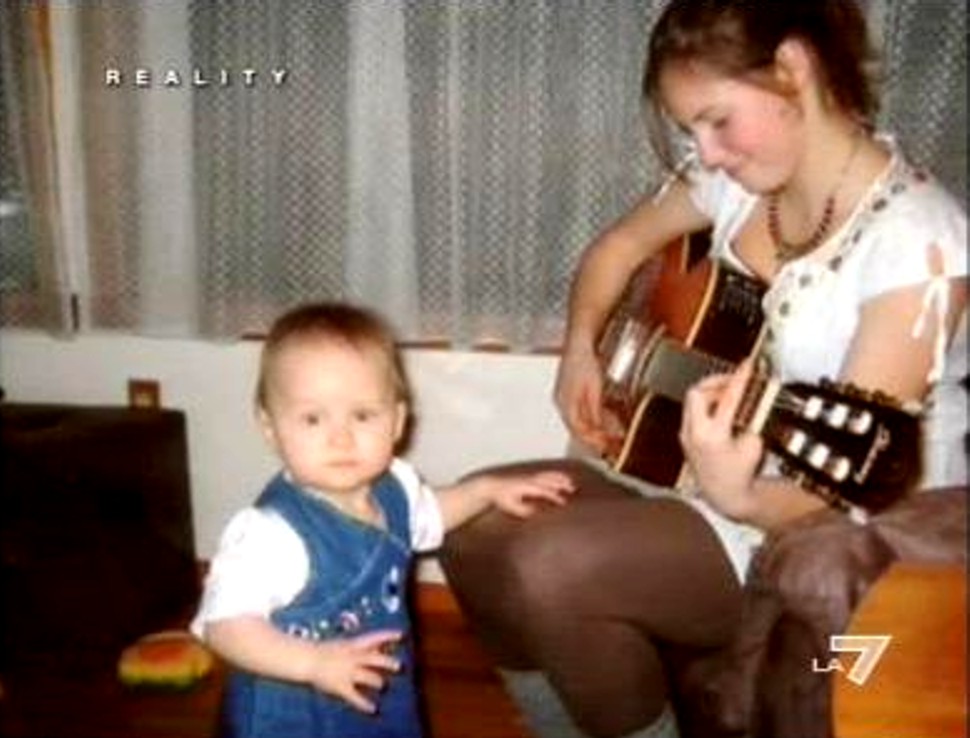
Below: Amanda Knox’s sister Deanna Knox being interviewed in the garden of her father’s home
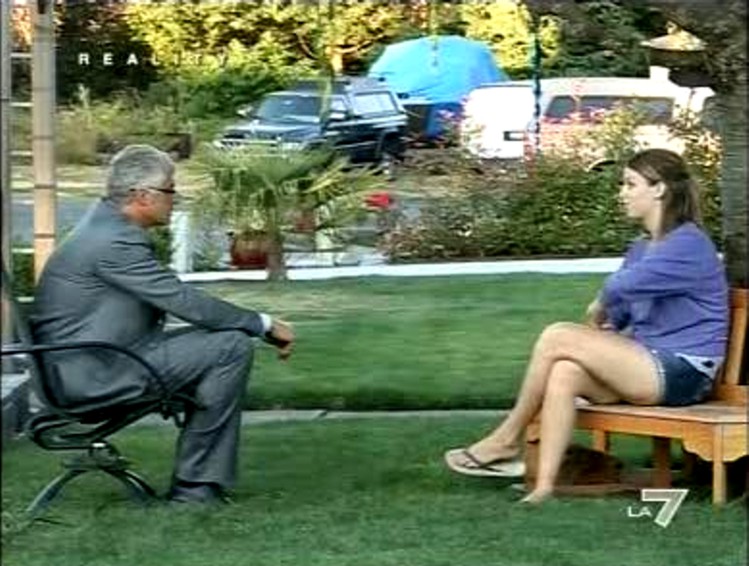
Below: Segment with part of a YouTube video showing Amanda Knox aopparently a bit drunk

Below: A Seattle street with crowd; many lively crowd scenes here and in the UK were included
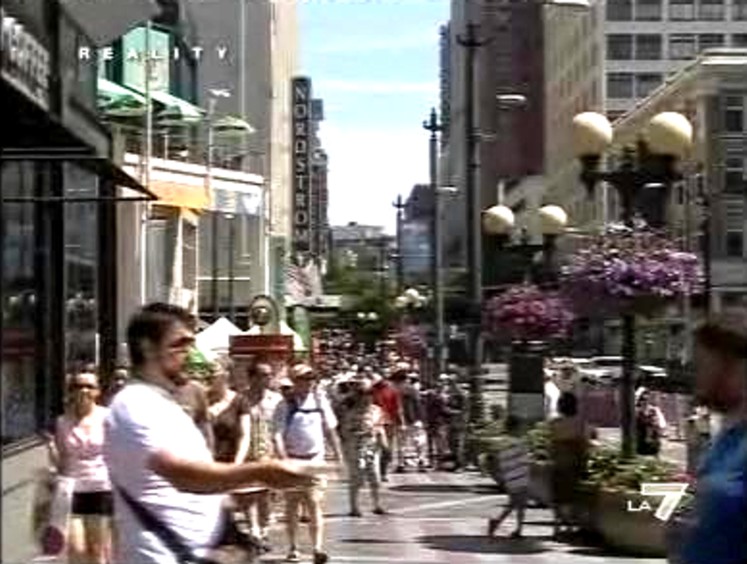
Below: First of four students at University of Washington; only one strongly believed Knox is innocent
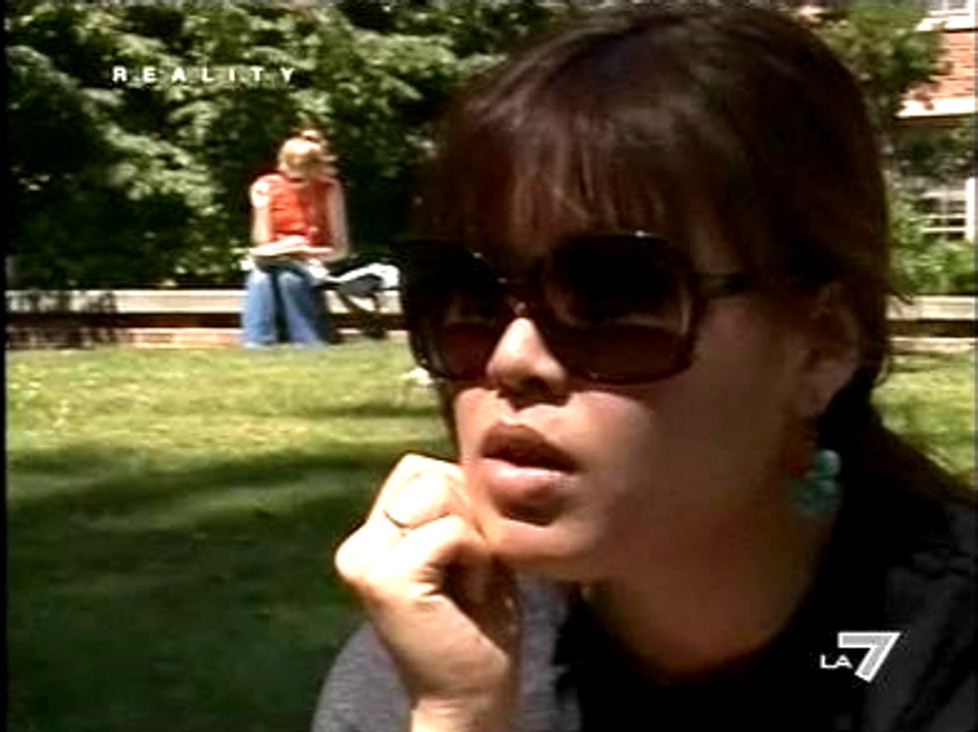
Everything is possible. It’s always a possibility - you have to study her personalty in depth and the eventual psychological motivations which could have led her to commit the murder. It’s the only thing I can say. I don’t know whether she took part in the crime.
Below: Second of four students at University of Washington; only one strongly believed Knox is innocent
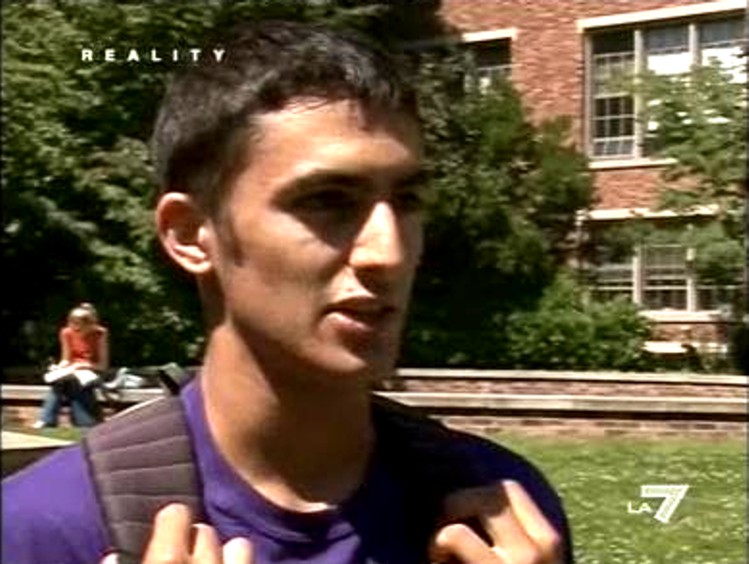
The story changed so many times that I think she is guilty. She changed versions several times. I’ve stopped following the story because the media try to take away attention from it and then go back to make the interest in it rise again. But I think that she is guilty.
Below: Third of four students at University of Washington; only one strongly believed Knox is innocent

I knew her, yes, we were at high school together at Seattle Prep. [Q: And you were in the same class?] Yes, in the same class. [Q: And what do you remember?] She was very nice - a nice person, I didn’t know her very well ... I could never have imagined that she could be involved in such a thing. It’s a tragedy because I believe she didn’t commit the murder. I follow the trial and it’s sad because for me, she seems innocent. I don’t really believe that she committed the murder.
Below: Fourth of four students at University of Washington; only one strongly believed Knox is innocent
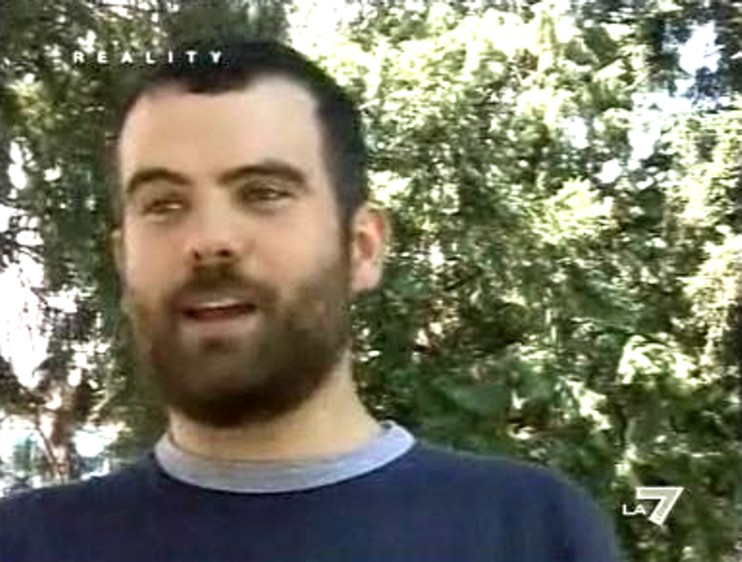
I don’t know - I haven’t any idea. I think that this case has been manipulated too much by the media. It’s very difficult to discern between media sensationalism and the truth. So it’s difficult to express an opinion.
Below: Dr Taso Lagos of UW spoke weirdly of cultural differences - and Knox somehow being the real victim
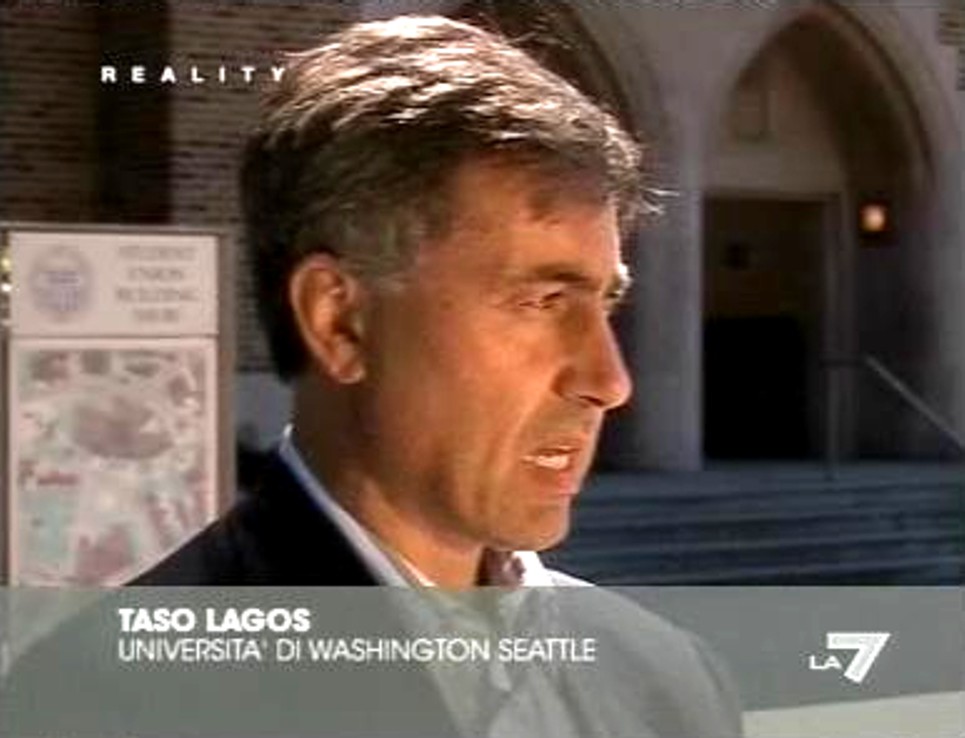
Below: Offices of Seattle magazine The Stranger where campaigner for truth Charles Mudede works
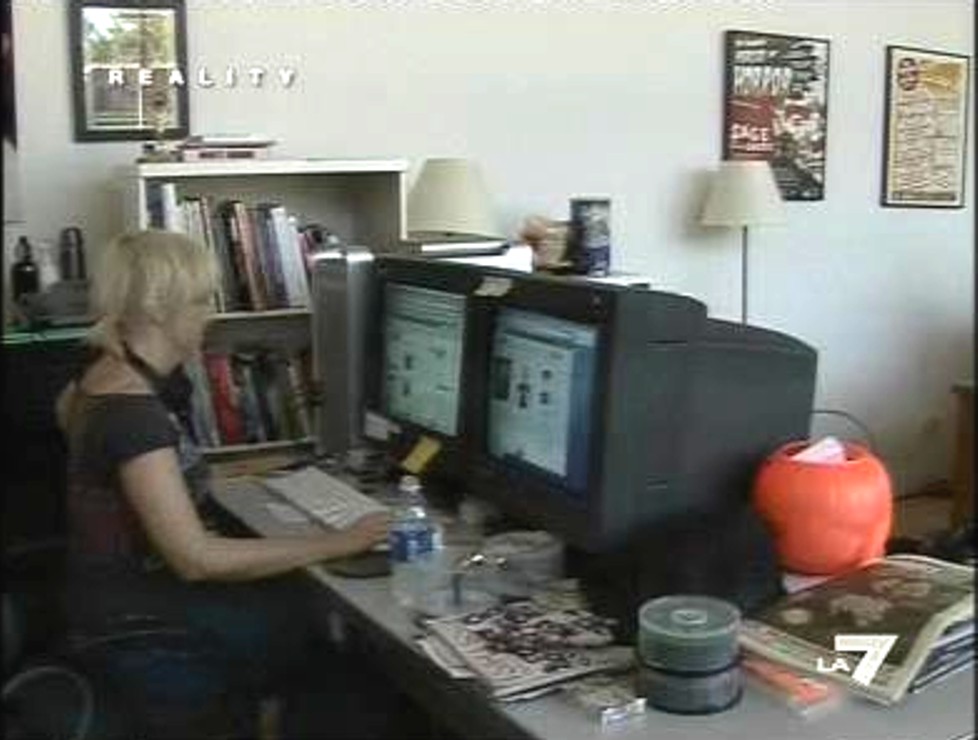
Below: Charles Mudede, perhaps first US journalists with an in-depth piece sympathetic to Meredith
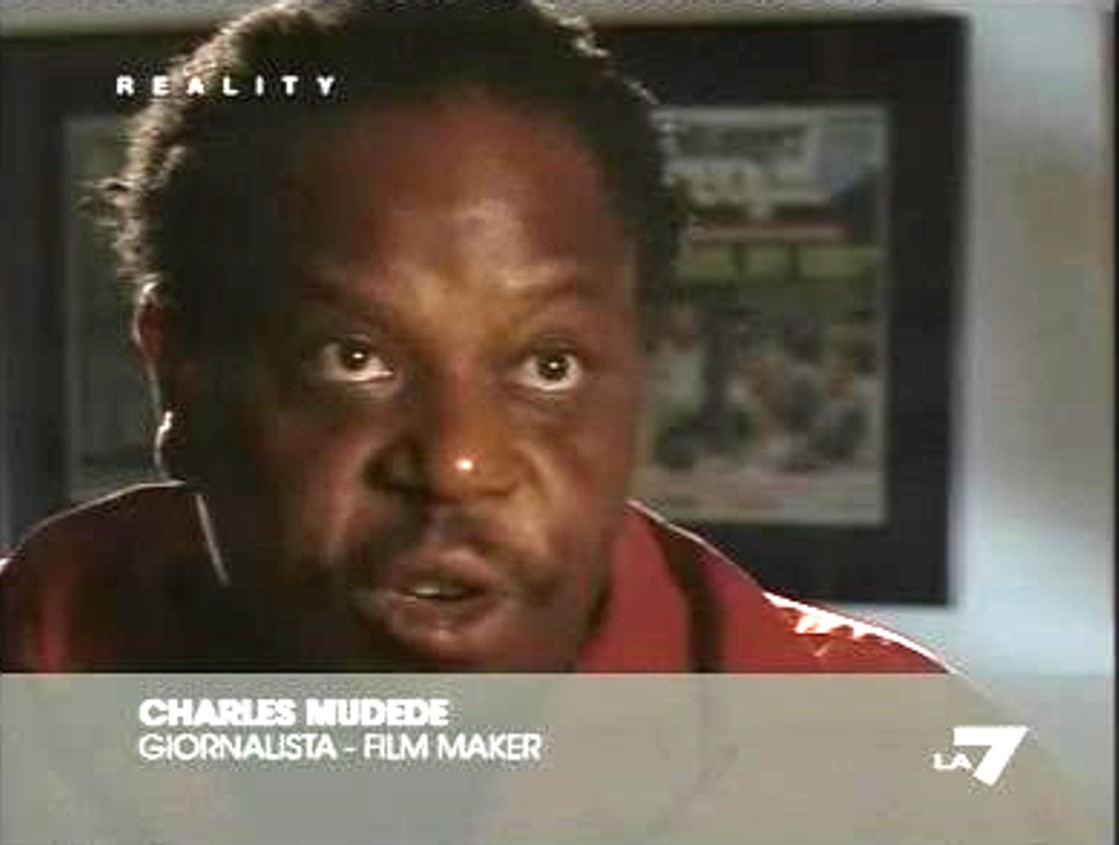
Here we don’t talk enough about Meredith, and that is always because of the distance. We don’t talk about who this wonderful English girl really was. I don’t know whether you’ve noticed it, but in the American press, yes, Meredith is named as the person killed, but they talk very little about her and about what her parents are undergoing. You have to consult the English papers to read this; you don’t find it in the American ones. This is the result of an attitude which is favorable towards Amanda, because you don’t have a connection with the victim as you would have, say in England.
Amanda was a bar attendant and also worked in an art gallery in the university area. She was a student of European languages. She practised yoga and played soccer: all characteristics of a normal American education. Amanda grew up in a middle class family in West Seattle, differently from how the British press described her as a rich girl. She isn’t. Amanda belongs to the middle class, typical of this city. Here there aren’t many poor people, or rather there are, but not a whole lot as in other cities. While the rich tend to not make themselves very visible.
There seems a dark side to Amanda’s personality. I think this dark side is the same as in many young people of her age. She wanted to experiment, at times with drugs, at times with sex. When I did research on her I found a police statement where it was written that Amanda had taken part in a party that ended up badly. She had to defend herself in court on charges of disturbing the peace, but it was nothing sensational. I don’t believe that her dark side is something exceptional even. The idea that she was beaten up and maltreated by the Perugia police makes me laugh - it’s an exaggeration. I mean the police have to do certain things which may seem a bit nasty but this is not unusual - it happens here too.
Below: One of various shots of grounds of Seattle Prep where Amanda Knox went to school
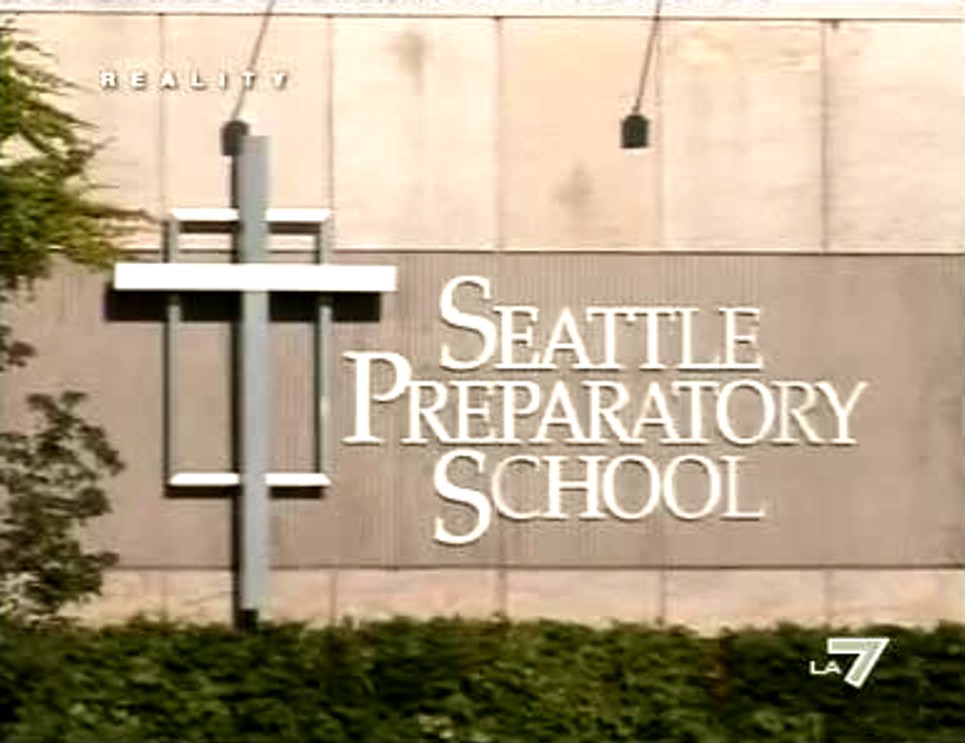
Below: Two of Amanda Knox’s teachers describe experiences with her as seemingly normal
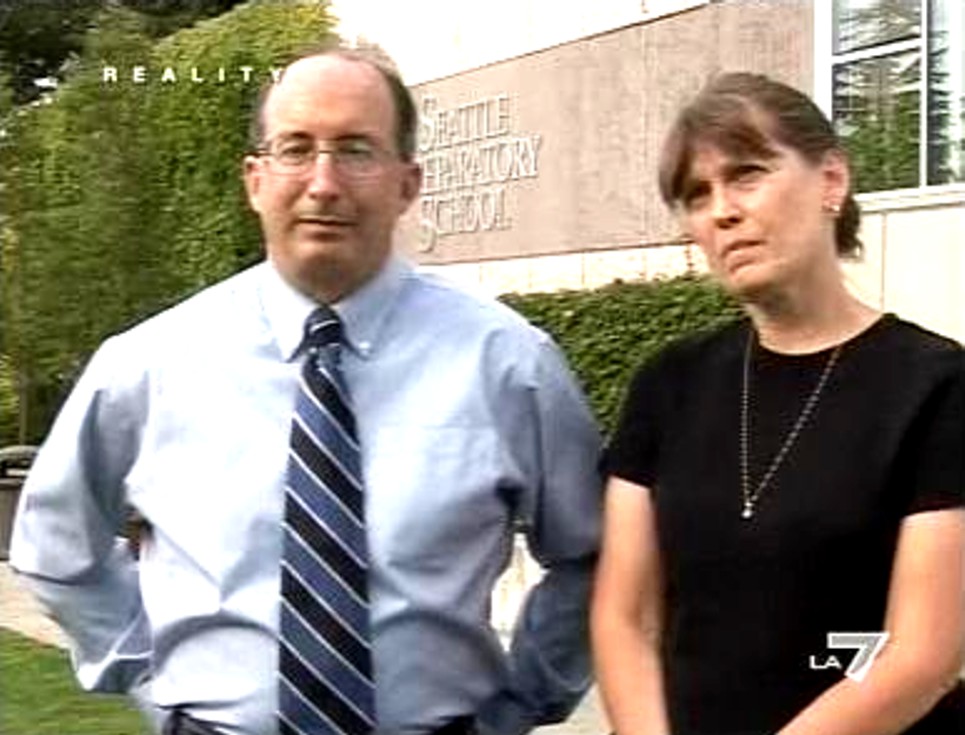
Below: Andrea Vogt, American reporter based in Italy, provides some excellent in-depth commentary
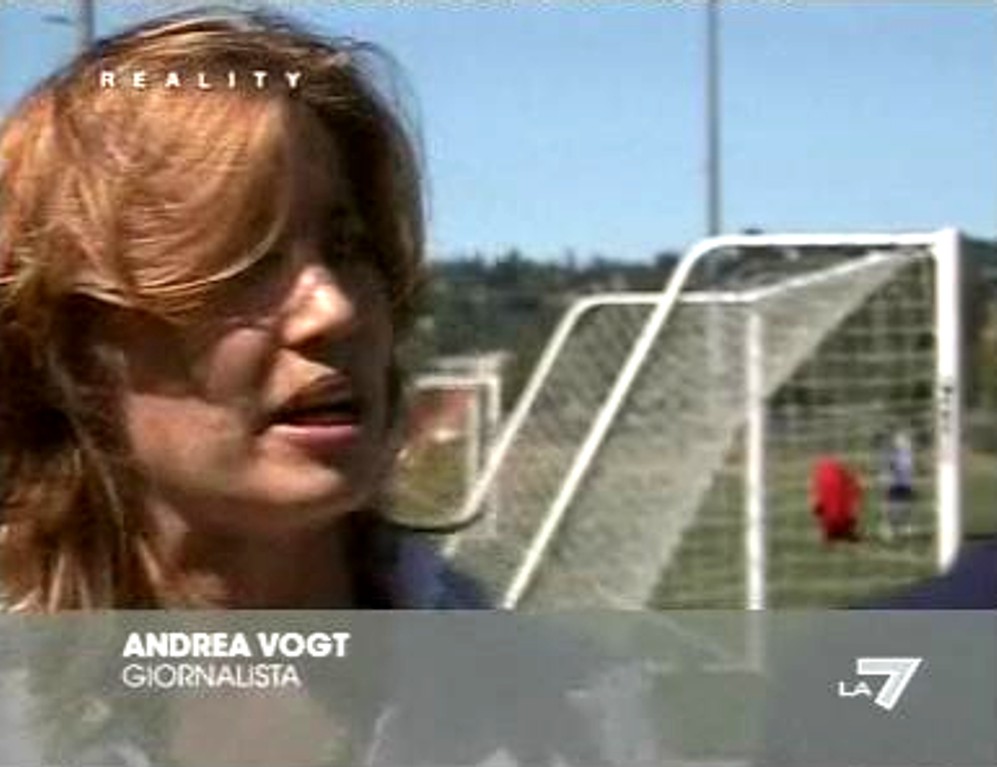
“She was a girl like so many others here in the Pacific north-west. She was sporty, she liked playing sport, going out. She spent so many of these beautiful days running or playing football. That’s what the girls here in this area do.”


